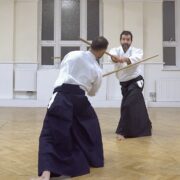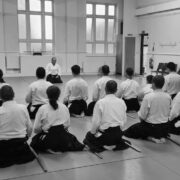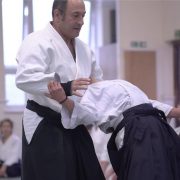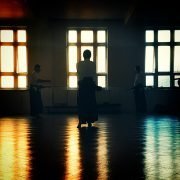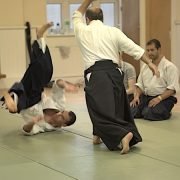What’s in a mile?
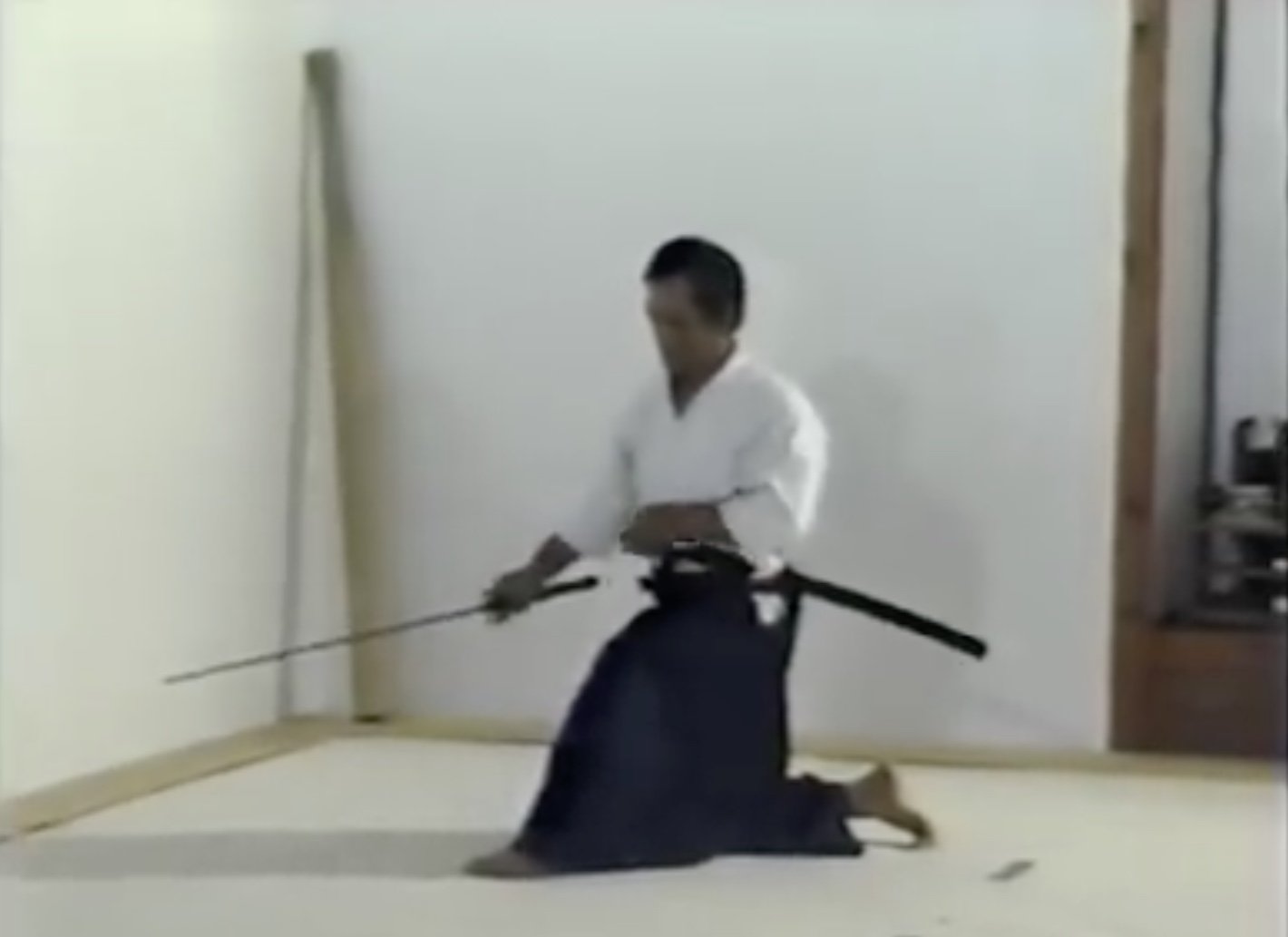
Many a myth would flourish in San Diego Aikikai. Most of these would be centred around Chiba Sensei’s past accomplishments, rumours, a lot of Chinese whispers and his inclination to perpetuate them. It was part of his “Brand”. There were many of these and one that comes to mind are suburis or repetitive vertical strikes with a heavy bokken. The Iwama ones for example, weighing in at 900g or 2lbs, is suitable for this. If you don’t know this is a fairly chunky piece of wood approximating the shape of a katana or Japanese sword. It is generally used for standard training to help develop core and therefore centred body work. Also to consider is the weight when doing such exercises. If you have tried even a little bit of boxing and got cocky, opting for the heavier gloves, 4oz or 100g heavier, you soon discovered how much harder it is in a few rounds of work in the ring, while your respect for Boxers and their conditioning goes up. I can assure anyone that 900g is a lot of wood to handle. How many cuts? 1000? Not difficult but a good start. 2000? You will definitely feel these. 5000? That’s the marathon one and they are tough going. That is if you are doing these properly. They take about 2 hours or so and like the real marathon you will likely hit a wall or start cursing at yourself for having started them in the first place. They are delivered from a position similar to a “horse stance”, cutting down to the waist while simultaneously bending your knees to quite a deep drop and then straightening your legs when you raise the bokken above your head again. If each strike is executed with full power and correct technique, with spirit and then what? You can kiai, the guttural yell you hear in many martial arts each time you strike and then just stay the distance until a couple of hours later you are done. The next day your arms, neck, shoulders, legs and just about everything else will be stiff and aching above and beyond the usual. It’s as much in the mind as it is in the body to maintain the quality of effort and technique throughout.
If any reader has had the opportunity to watch some of the films made back in the mid 80’s in the University Ave dojo in San Diego, you would sometimes see this monster of a bokken leaning against the left wall close to the kamiza or shrine. It was carved and shaped from a 6x6inch post and over 5ft long and much heavier than the Iwama bokken. I tried using it on several occasions rotating it behind my head in order to do a vertical cut as it comes round and then rotating it to the other side to do the same in a continuous cycle. It is possible, just. Raising it straight up and down, however is just not possible, at least for me. I would just tip forward as the weight would pull me down and the tsuka or handle is just too chunky to get a strong enough grip to stop the strike at the right place. It’s almost Monty Python as a knight would raise his broad sword above his head only to tip over from the weight of it.
If these were not challenging enough then there was the biggest challenge and therefore myth of them all. Bunny hops and the pinnacle was a mile. That’s 5760 ft so probably 3000 bounces or more with a straight back on the balls of your feet, knees open in a wide v- shape, if you can open that much, and hands behind your head, elbows open. Just writing about these high impact exercises reminds me how daunting they were even during a regular class. I was pretty good at them, powerful legs with a good spring and elevation, not to say endurance but a mile? Chiba Sensei supposedly did this. The subject was up again one sunny summer evening in his Eagle St home and I decided to ask him a question about it. “Were you able to go to class the following day?” It wasn’t a challenge, I wouldn’t have dared but worth asking him at least that. I knew what 5-10 minutes of them were like and so I thought a fair question. “Maybe you can’t, which sounded like you can’t, but I can and I did.” His tone? Not quite “how dare you?” but it definitely sounded annoyed while full of drama and pomp. All while perpetuating his personal myth and putting me in my place. The question always remained if these hops can actually be done and a couple of the guys at the dojo were crazy enough to give it a go. None of them to my knowledge achieved it. I didn’t bother .
I use them sparingly in my dojo now. Preferring to use different exercises to create a springy and explosive movement from the legs. Many Aikido people tend to have flat foot movement when training, unaware or unable to create dynamism in the kata through their legs. Bunny hops are a pretty intense way of achieving that and often people can end up with knee problems. Having said that, in all my years of training I have never known anyone to injure their knees because of them. It was more the case that if there was an underlying issue, say a past injury or some inherent weakness, then the problem would come back or reveal itself. The British Army had apparently banned them indicating that too many soldiers were getting knee problems. There are a couple of ways of doing them. The most common way I have already described. The other way was done during weapons, bokken work or Iaido, sword training. Bunny hops with a sword is a thing to behold. You leap up high arching your body as much as possible into a partial back bend all while thrusting forward with your legs as you cut with the weapon. There is some resemblance to the technique used in a long jump except you bounce and repeat several times. The dojo was 40-50ft in length and I could get across in 6 or 7 jumps on a good day, turn around and repeat for 5 mins or so. I must admit that there was something quite satisfying with the these versions. The regular ones are more upright with smaller repetitions so would take at least twice the number of jumps. Do this for 8 or 10 laps in addition to the class and you will most assuredly feel it.
Back to the mile. Are they actually possible? Are there certain types that are bloody minded enough, whatever the pain and cost to actually do them? Maybe but… hmm…I’m not sure either. As for getting up and going to class the next day? Assuming these could be done, even half that, you will be aching, wobbling and struggling for a month with legs all seized up. Why do these extreme challenges? To prove a point and make a name as though intensive training was not enough.
[Update] I have had confirmation that a mile was actually done by several sources.

